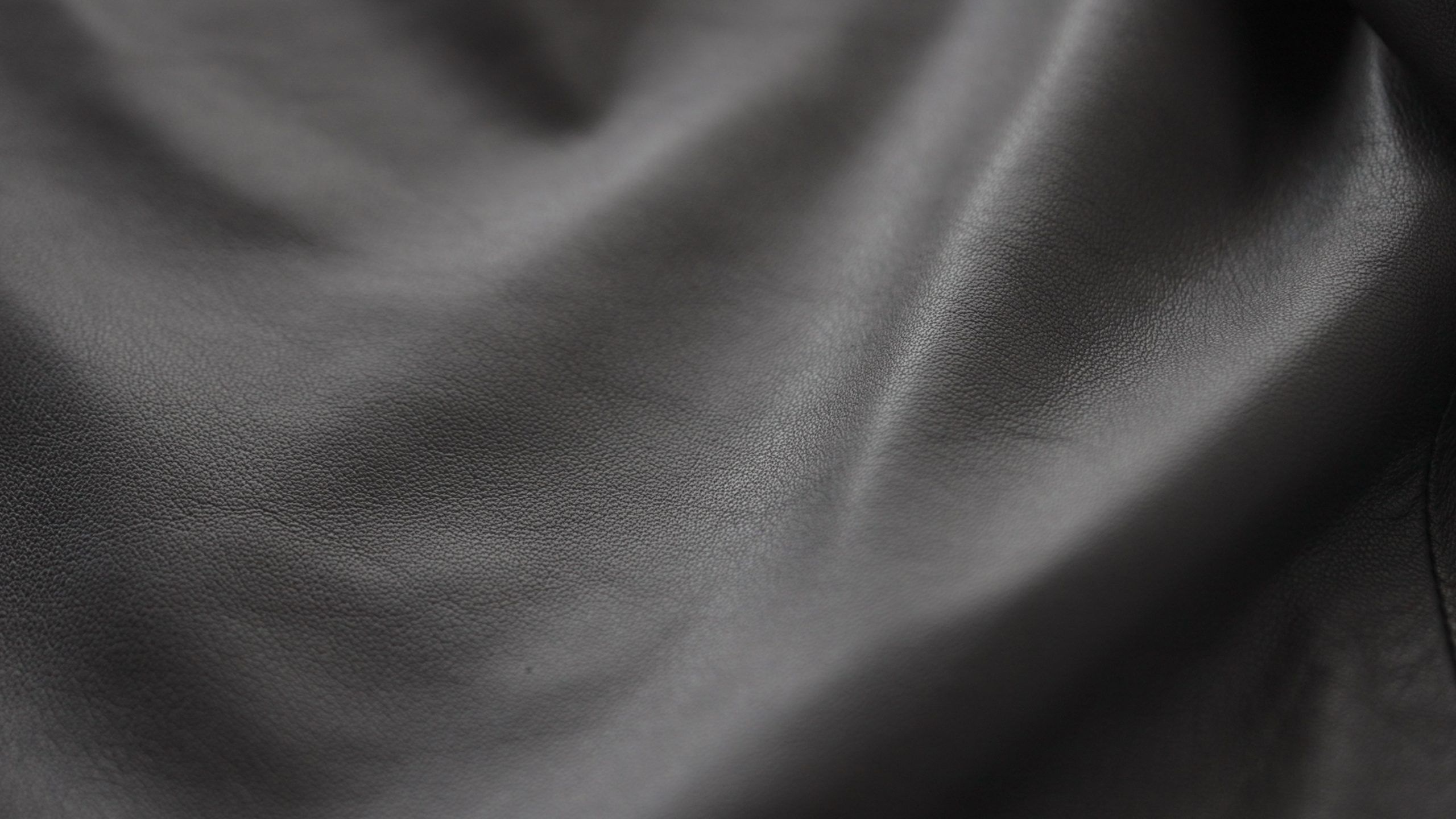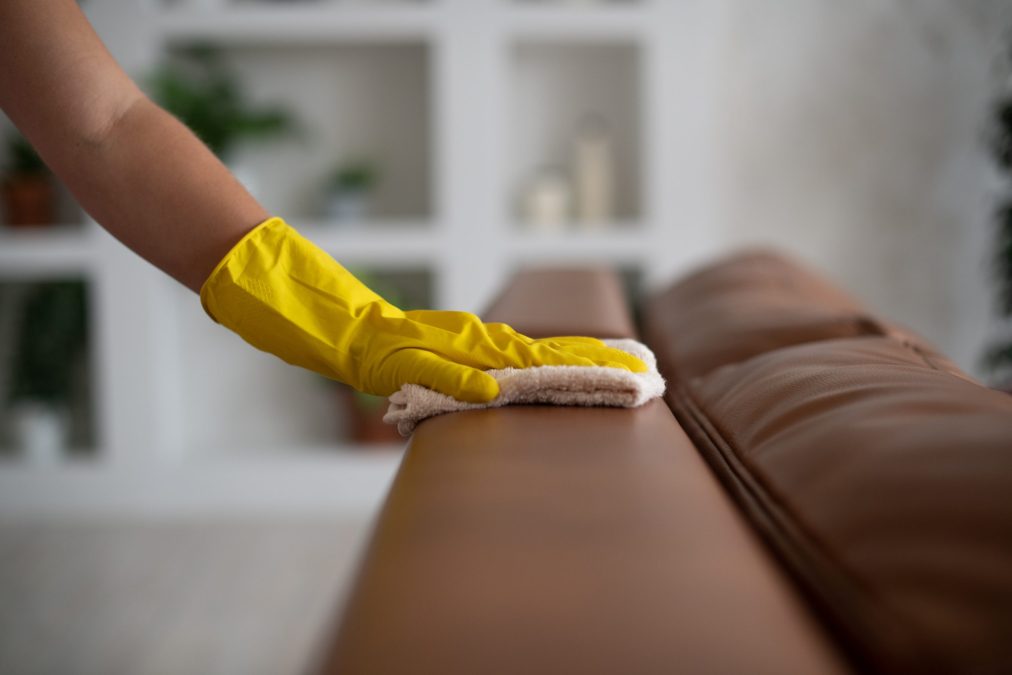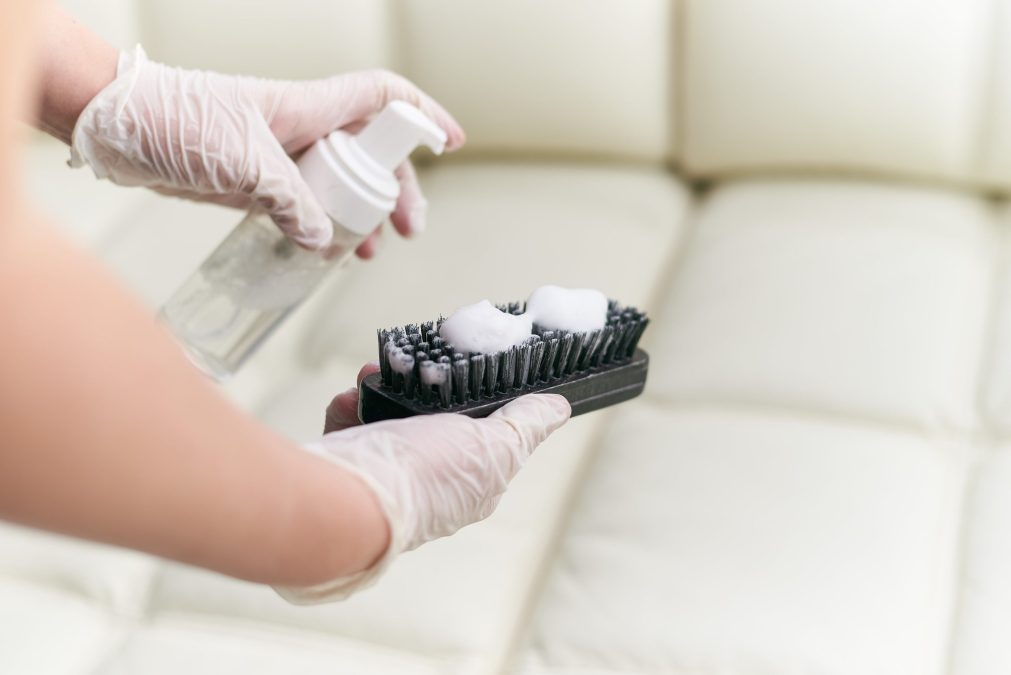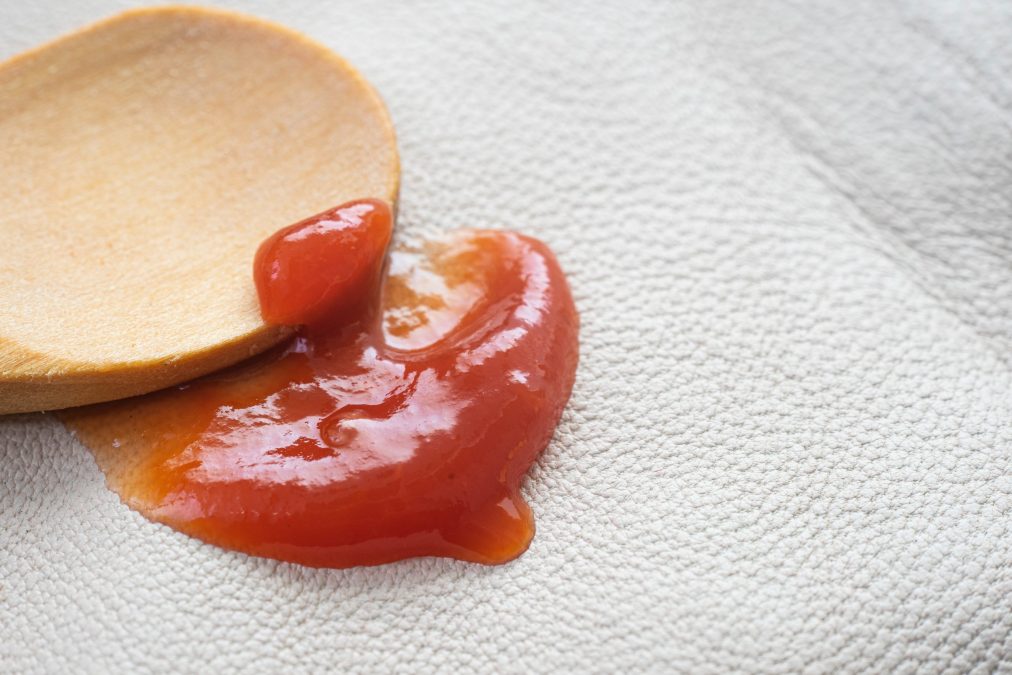Generally speaking, good quality, high grade leather is actually a low maintenance material. Suitable leather care products, if needed at all, are widely available and applying them to your premium leather sofa or recliner requires no specialist expertise either.
Caring for your leather furniture is actually quite easy but there are a few DEFINITE DON’TS that we want to stress first before going into any further detail about cleaning and maintaining your premium leather sofa.
Leather Care Don’ts
- Never use household detergents, synthetic cleaners, anything abrasive or products containing harsh chemical fluids.
- If possible, avoid direct sunlight falling upon your leather furniture, not only will it cause fading or discolouration but it can actually damage the leather surface in some cases.
- Try not to position your leather sofa too close to a heat source like a heating radiator or log burning stove – harsh heating can cause surface cracking and occasionally, discolouration.
- Do not wet your leather sofa or recliner too much when cleaning and if using water, try to avoid ‘spotting’ water on problems, rather, apply to the whole section or area. Too much water can weaken internal fibres and damage the leather’s protein bonds.
- Never rub vigorously or persistently is one spot or area of your leather recliner or sofa

We like the old saying in the leather industry,
“if you wouldn’t put it on your face, don’t put it on your beautiful leather sofa!”
If in any doubt, please always ring or whatsapp Marko or Ash at Sofamax and we will be happy to advise you on the best course of action or direct you to professional help.
Cleaning and Ongoing Care of Your Leather Sofa
Just like any fabric covered sofa, leather will gather dust and if situated in areas where food is consumed or cooked or located in heavily used activity areas like living or cinema rooms it will also acquire moisture and oils and this can, in the longer term, become grimy.
The good news is that leather care and maintenance is very simple and very easy!
Cleaning

Dust
The easiest way to remove dust is to simply wipe down your leather sofa regularly with a dry, soft, microfibre cloth. A cleaning cloth made of soft material is also fine but microfibre is better at ‘lifting’ dust out of the grain and picking up any light grimy surface particles. Ideally, try and keep these cloths separate from all your cleaning products and cloths. If you can’t, pop it into a clean, unused plastic freezer bag.
For a deeper clean, a lightly dampened microfibre or plain soft cleaning cloth is very good at removing and picking up heavier particles from your leather furniture. This also helps add some moisture back into your leather and helps keep it from drying out but remember, only dampen your cleaning cloth, it should never be saturated with water.
Always use dye free or non-coloured, plain, cleaning cloths. White microfibre is best.
Grime or Soiling
A build-up of oils and moisture can occur in the grain of your leather suite and this may sometimes require using a dedicated leather cleaner. Remember though, always try a damp cloth first as this often works well – see above.
Any cleaning products must be deemed for premium leather use. We recommend buying from reputable companies that focus on leather care and maintenance. Good quality, safe, leather cleaning products are often made using natural based elements and ingredients and these should be sought out.
Soap Flakes
Soap flakes have been used for cleaning leather traditionally for hundreds of years and it is still recommended in many countries today for cleaning premium leather products. It is gentle and generally seen as safe to use on coloured leather suites, however, there are some rules to follow if you use soap flakes. Always follow the recommended dilution rates and always check they really are ‘natural’ soap flakes, that is soap flakes made from vegetable-based products. Often, they are made with rapeseed or coconut oil and, ideally, the soap flake should contain at least 80% fat based content.
Leather Cleaners
Leather Cleaners – these are predominantly specially formulated creams or sprays which will gently loosen or lift dirt and grime in conjunction with using a soft microfiber cloth. Always use a premium based formula on your sofa or recliner as these have been designed to clean with the characteristics of premium leather sofas in mind. This means they will be the right consistency to clean without causing saturation or staining in their own right.


Stains
Light staining can be improved by using the techniques discussed above but heavy staining, like pen or paint, for instance, may need specific stain removing products and specialist advice. Remember, when working on a small stain or dirt mark, dabbing is better than rubbing. Avoid rubbing on one spot and always beware that serious wetting in a single spot can do damage too. If possible, always finish by applying a damp cloth to the whole area so that it will dry evenly and look the same.
There are stain cleaning and stain removing products on the market and these are usually sold by companies that focus solely on leather care and maintenance. There is no one product to recommend as every situation is different and different leather finishes also need to be considered before applying any stain removing products.
Always seek advice from Marko or Ash in the first instance if you have a serious stain or mark on your Italian leather sofa or recliner.
Caring
With age and heavy use, some leather finishes can begin cracking on the surface. Although not appealing to everyone, some people love this look and feel in a vintage sofa and sometimes are prepared to pay more for it. However, it is more common that customers want their purchase from Sofa Max to remain in the best condition possible for as long as possible. And there are good products out there that will help you do just that.
Leather Moisturisers or Nourishers
Moisturisers do what they ‘say on the tin’, they feed and nourish your leather sofa the right levels of hydration through a process of absorption. Generally, they are applied as a cream using a soft cloth but sometimes can be found in an aerosol format. Too much moisturising can weaken your leather sofa so it should only be applied occasionally or if you can see or feel that your leather sofa has lost its suppleness or is cracking. Application once or twice a year should be more than satisfactory.
Leather Protection
Protection creams generally will add a layer or boundary of protection to your leather furniture but they will usually nourish your leather finish too.
This protective layer will help
- repel spills
- create a barrier against dirt, dust and grime
- will offer some protection against UV light, so will reduce the risk of discolouration and fading.
Applying a leather protection cream as soon as you have your new sofa or recliner is good practice, especially if it will be used in a play room or in a cinema room where food and drink may be consumed.
Again, this product should be used occasionally as they will usually have moisturisers and conditioners in the formula and could potentially weaken the leather fibres in your sofa or recliner.
In lightly used areas, once or twice a year should suffice, really. However, it is not uncommon to apply leather protection more frequently to common contact areas like armrests or headrests
Restorers and Repair Kits
There are products that will restore the look and feel of old and worn leather sofas and recliners. They are usually found on specialist leather repair and maintenance product sites. They will restore colour to your leather sofa and often will produce that beautiful leather aroma that you experienced when your sofa was new. There is a wide range of restoration products available for use on premium leather sofas and they can do a very good job at bringing tired leather furniture back to life. However, this task should be undertaken only after receiving specialist advice from a leather repair specialist or a leather care product specialist.Please speak to Marko or Ash for guidance and advice on any restoration or repair needs in the first instance.

